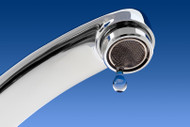How to Troubleshoot American Standard Kitchen Faucets
Mar 20th 2018
An American Standard kitchen faucet is made of a spout and a lever, which is installed on the top, side, or next to the spout. Regardless of where the lever is, repairs are completed similarly. As with all appliances, you may run into some issues over time. To help you troubleshoot these problems, use the guide below.
Leaks
If the spout is leaking, it’s likely that the seal between the valve seat and cartridge have become worn. With a leaky spout, you must first purchase American Standard faucet parts that fit your model of
Temperature Adjustments
Water that is too hot or cold is more than an annoyance. To remedy this problem, you will need to adjust the temperature limiter. This component is right under the handle. You will need a hex wrench to remove the screws to access the limiter. Depending on the model, you may also need to remove a protective cap. Next, lift the red temperature limiting safety stop handle with your fingers or a flat head screwdriver. This lets the adjustment wheel spin. Turn the wheel clockwise to lower the temperature of the water and counterclockwise to raise it. The wheel ranges from 0, the hottest, to 7, the coldest.
Other Problems
When faucets get older, they tend to experience more issues. You might notice lower water pressure coming from your spout. This issue can be caused by mineral deposits building up inside the cartridge. Soak the cartridge in white vinegar overnight to remove these deposits. The same issue can also be caused by a clog in the aerator, though this can also be remedied with white vinegar.
Water escaping from an area that is not the spout means a loose connection. You can easily fix this by tightening the connection with a pair of adjustable pliers. One common area where leaks occur is around the base of a spout with a spray attachment. In this situation, remove the spout and tighten the hose at the base.


